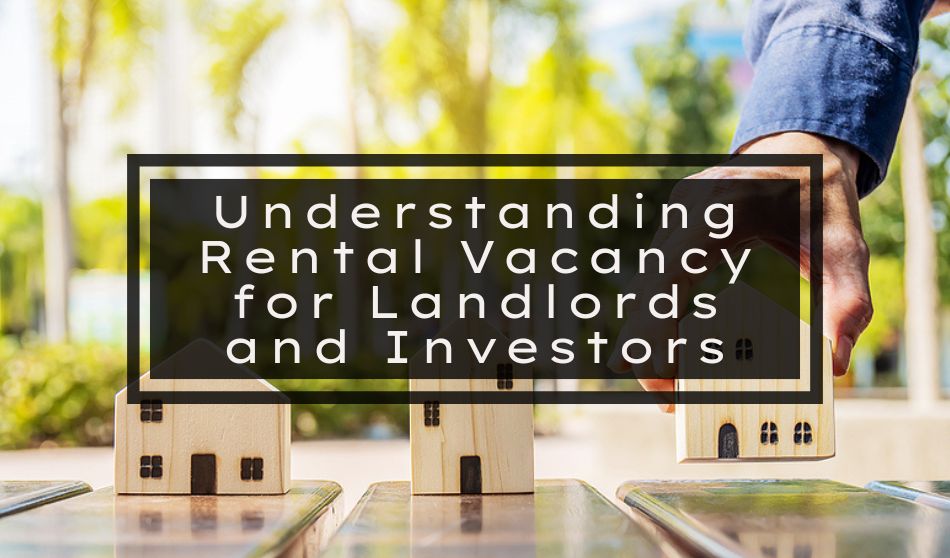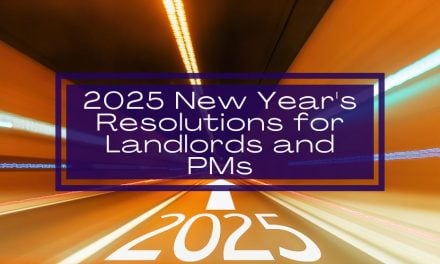
Knowing how to manage a vacancy, prevent vacancies, and predict them using vacancy rate calculations are all necessary aspects of effective rental management. Whether you are an investor or a landlord who is seeking to grow your portfolio, or more successfully manage your current one, a good grasp on vacancies helps to mitigate loses and ensure a strong ROI.
If you invest in real estate, understanding the ins and outs of rental vacancies is an important piece of the puzzle when it comes to your bottom line. Understanding how to evaluate vacancies, prevent them, and fill them quickly is key for a successful investor or landlord.
What is a vacancy?
Simply put, vacancy in real estate is when a property remains unoccupied for a period of time. For rental properties, vacancy and the likelihood of vacancy throughout the year will play a large role when calculating a real estate deal. Not only will it influence whether you should take a deal as an investor, but if you are looking to sell or refinance a rental property, vacancy and the vacancy rate will likely be taken into consideration during the valuation of the property.
Understanding Vacancy Rate
When calculating the risks and benefits of a potential real estate transaction, savvy investors look at a few key calculations and numbers. Vacancy rate is one of those telling data points and is important if you are looking to buy a rental property or if you currently have a rental property and are attempting to get the most ROI possible.
Learn more: Financial Analysis Tips For Real Estate Investments
Calculate the Vacancy Rate for a Single Property
The vacancy rate is the percentage of time expected for a property to be vacant and not generate a rental income. In a single-family home, vacancy rate is a number expressed in a percentage that represents how much time you should expect the property to remain vacant. For example, Airbnb investment properties often have a vacancy rate of around 40% to 50%, so if you decide a property has 300 potential rentable days a year, you can expect it to be empty for 120 to 150 of those days.
Calculate Vacancy Rate for a Multifamily Property or Across Your Portfolio
To calculate the vacancy rate across a full portfolio or within a multifamily property, you can calculate based on the number of unoccupied units within a property and the total number of units and multiplying that number by 100.
Vacancy Rate = ( Number of Vacant Units Total Number of Units ) × 100
Example Calculation:
- Total Number of Units: 50
- Number of Vacant Units: 5
Vacancy Rate = ( 5 50 ) × 100 = 10%
There are a few ways to find out the vacancy rate in an area if you don’t already have the data to calculate a specific property. Keep in mind that while some options may be more accurate than others, vacancy rates are not precise markers but more of an indicator of area trends. Looking at census vacancy rates may be a helpful starting point; keep in mind that this information will not include a breakdown of the level of neighborhood specifics, which can be a big fluctuation and can affect the ROI. Investors can also check in with real estate agents, property managers, or other landlords; these can be a better approach because finding a local expert can be a huge value when attempting to look at trends across neighborhoods or properties with certain amenities or features. Connecting with local expertise can be a pivotal tool when finding a deal, and joining a landlord association or rental association can ensure you make those vital connections.
Learn more: Why Join a Rental Association?
How a Rental Vacancy Affects ROI
You don’t need to be a financial expert to know that vacany can cause you take a massive hit when it comes to your ROI. The longer your property sits between leases, the longer you will go without rental income. If you are relying on your rental income to cover a mortgage payment, you could notice a serious drop in your reserve funds until you find a new tenant.
Remember that with a vacancy comes not only lost rent, but additional marketing costs, showing costs, and time spent processing applications or screening tenants. Unfortunately, administrative costs and maintenance costs don’t end when the property is unleased, so vacancies pose a large risk to your portfolio’s health.
How to Prevent High Vacancy
Preventing high vacancy should be on the top of your list as a landlord, investor, or property manger. Keeping your properties occupied with great tenants–and keeping those great tenants happy–is vital to your bottom line and your success in the rental industry.
Start With a Good Deal
In real estate, it’s hard to outrun a bad deal, and it’s even harder to find success as an investor without carefully examining the risks and benefits of a particular property. While flipping a property, or having a genius marketing strategy may increase your chances of higher occupancy, the easeast way to prevent vacancies is to start with a property in an area that already has a good vacancy rate. This will ensure that any improvements to your marketing or your property itself are just icing on the cake instead of fighting a make-or-break situation when it comes to keeping the property occupied.
Mitigate Tenant Turnover
Tenant turnover leads to vacancies, even if it’s for a short period of time. This means tenant turnover can be a profit killer. If you have a good tenant, keeping them long-term and preventing vacnancies should be at the top of your to-do list. There are quite a lof of expenses associated with turnover, and these are all taken into account without calculating the stress and risk of replacing a great tenant with a risky one.
When you consider the list of expenses associated with turnover, it makes sense that the most profitable option for your investment is to avoid turnover wherever possible. You may not be able to prevent turnover due to changes in family situations or moving for a new job, but you can certainly have a big impact on your turnover rates by valuing your current tenants and offering great customer service to them. You can also consider offering renewal bonuses or discounts to entice renters who may be on the fence at renewal season.
Implement Great Branding and Marketing
Having a good marketing strategy and understanding your rental business’s brand is key to finding the right tenants quickly. Use social media, rental listing sites, and analog advertisements to get your listings in front of potential tenants who would love to live at your rental property.
While you don’t have to have a college degree in marketing, you will want to have a few helpful marketing tips under your belt and have a basic understanding of SEO and what it takes to ensure that potential tenants find you online.
Learn more: Marketing | SEO Tips and Free Resources for Property Managers
Remember that when it comes to posting rental listings online, you’ll want as many applicants as possible to see your listing. This will ensure that you’re easily able to find someone that meets your tenant screening criteria and will be likely to be an excellent renter. Getting your property out on as many listing sites as possible is going to mitigate the risk that your property goes unnoticed and stays vacant for too long. Using a landlord software option with built-in rental listing syndication makes this fast and easy, which takes a lot of the overhead away from dealing with filling vacancies quickly.





